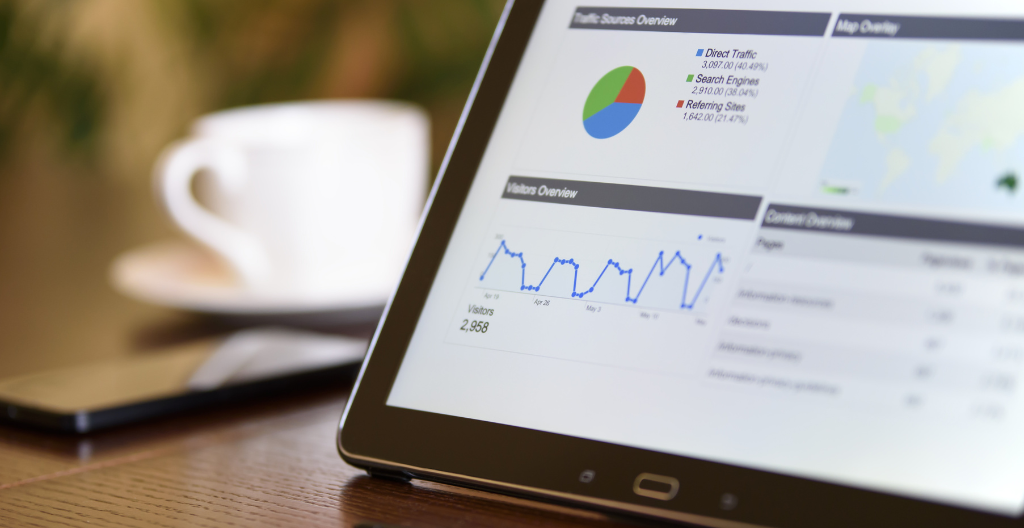
How Can Web Marketing Benefit Businesses in Brisbane_
October 6, 2023
What Are Brand Development Strategies
October 6, 2023Google Ads and SEO (Search Engine Optimisation) are two powerful digital marketing strategies that, when used together effectively, can significantly enhance your online visibility and drive more traffic to your website. Google Ads, a paid advertising platform, allows you to place targeted ads at the top of search engine results pages, while SEO focuses on optimising your website’s organic search rankings. In this exploration, we’ll delve into how these two strategies can complement each other to maximise your online presence and achieve better results in the highly competitive digital landscape.
Impact of Google Ads on SEO
Incorporating Google Ads can have a significant impact on SEO for websites. While Google Ads and SEO are distinct marketing strategies, they can work synergistically to enhance your online presence. When you run Google Ads campaigns, your website often experiences increased traffic and visibility, especially for targeted keywords. This influx of visitors can lead to higher click-through rates and engagement metrics, which are considered positive signals by search engines. Additionally, Google Ads provides valuable data on keyword performance, which can inform your SEO strategy, helping you prioritise keywords that resonate with your audience. Moreover, the additional traffic generated by Google Ads can result in more backlinks, social shares, and mentions, all of which contribute positively to your website’s SEO. Overall, integrating Google Ads into your digital marketing strategy can indirectly bolster your SEO efforts by improving various ranking factors and enhancing your website’s overall online presence.

Key Differences between Google Ads and Traditional SEO Strategies
When it comes to digital marketing, Google Ads and traditional SEO strategies differ in several crucial aspects:

- Paid vs. Organic: Google Ads involves paid advertising, where you pay for ad placements, while traditional SEO focuses on optimising your website to rank organically in search results.
- Immediate Results vs. Long-term Strategy:
- Google Ads delivers immediate results, driving traffic to your site as soon as campaigns are launched.
- Traditional SEO is a long-term strategy, requiring time to build organic visibility and authority.
- Cost Structure:
- Google Ads operates on a pay-per-click (PPC) model, where you pay for each click on your ads.
- Traditional SEO typically incurs upfront costs for optimization and ongoing expenses for content creation and link-building efforts.
- Visibility Position:
- Google Ads ads appear at the top of search results pages, labelled as ads.
- Organic search results from SEO efforts appear below ads.
- Adaptability and Control:
- Google Ads allows precise targeting and control over ad content and budget adjustments.
- Traditional SEO requires adapting to changing search engine algorithms and trends.
- Budget Flexibility:
- Google Ads enables you to set daily or campaign budgets and adjust them as needed.
- Traditional SEO often involves fixed costs and may require upfront investment without immediate returns.
- Keyword Competition:
- Google Ads competitiveness depends on bidding for keywords, with costs varying based on demand.
- Traditional SEO competition is based on organic rankings, influenced by content quality, relevance, and backlinks.
- Click Costs vs. Organic Traffic:
- Google Ads drives traffic through paid clicks, where costs can accumulate quickly.
- Traditional SEO aims for organic traffic, resulting in free clicks once rankings are established.
- Ad Placement Duration:
- Google Ads placements are active as long as you continue funding campaigns.
- Traditional SEO efforts can provide long-lasting organic rankings, but maintaining them requires ongoing optimization.
- Ad Creativity:
- Google Ads allows for creative ad formats, including text, display, video, and shopping ads.
- Traditional SEO focuses on optimising website content and meta information.
- Performance Tracking:
- Google Ads provides detailed data on ad performance, including click-through rates, conversions, and ROI.
- Traditional SEO relies on various tools to track organic keyword rankings, traffic, and user behavior.
- Targeting Options:
- Google Ads offers precise targeting options, such as location, demographics, interests, and keywords.
- Traditional SEO primarily targets specific keywords and content optimisation to attract a broader audience.
Google Ads and Organic Search Rankings
Effective Google Ads campaigns can indirectly influence organic search rankings, but they do not have a direct impact on them. Here’s how it works: When you run Google Ads campaigns, your ads appear at the top of search results pages. If your ads are highly relevant, have compelling ad copy, and lead to valuable landing pages, users are more likely to engage with them by clicking and exploring your website. This increased user engagement and click-through rate can send positive signals to search engines like Google. Over time, these signals may contribute to improved organic rankings, as search engines interpret the increased engagement as a sign of your website’s relevance and credibility. However, it’s crucial to note that Google Ads and organic search rankings are separate entities. To achieve and maintain strong organic rankings, ongoing SEO efforts, such as content optimisation, backlink building, and technical SEO, remain essential. While Google Ads can complement your overall digital marketing strategy and indirectly benefit organic rankings, it’s not a direct mechanism for improving SEO.

Supporting SEO Efforts
Integrating Google Ads into your overall digital marketing strategy can be a powerful way to complement and bolster your SEO efforts. There are several ways in which Google Ads can work in harmony with your SEO strategy to enhance your online presence and drive better results.

Firstly, Google Ads provides valuable insights through keyword research. By analysing the keywords that drive traffic and conversions in your ad campaigns, you can gain valuable data to inform your SEO strategy. This data helps you prioritise keywords and craft content that resonates with your target audience, ultimately improving your website’s organic search performance. A/B testing is another valuable tool within Google Ads. You can experiment with different ad copy, landing pages, and other elements to identify what resonates most with your audience. The insights gained from successful ad tests can be applied to your website’s content and user experience, leading to improved SEO. Quality Score, a metric used in Google Ads, often involves optimising landing pages and user experience. These optimisations can indirectly benefit your website’s SEO by creating a better user experience, which is a known factor in organic search rankings. Google Ads also enhances branding and visibility. Even if you already rank well organically for certain keywords, Google Ads can increase your brand’s visibility in search results. This heightened visibility can lead to more clicks and indirectly influence your organic rankings, as increased traffic and engagement are favourable signals to search engines. The detailed conversion tracking provided by Google Ads is a treasure trove of data. By analysing which keywords and ads drive the most conversions, you can fine-tune your SEO strategy to target high-converting keywords and content, optimising for better results. Lastly, remarketing campaigns in Google Ads can re-engage visitors who previously interacted with your website. This can boost brand recall and potentially lead to more branded searches, which can have a positive impact on your SEO.
Keywords for Google Ads and SEO
Certain keywords can be effective for both Google Ads and SEO campaigns, as they reflect user intent and are relevant to your business or content. These keywords often fall into the “sweet spot” of being valuable for paid advertising and organic search. For example, keywords with high search volume, commercial intent, and moderate competition can work well for both. By targeting these keywords in your Google Ads campaigns and incorporating them into your website’s content, you can achieve a cohesive approach that maximises visibility and clicks, whether through paid or organic results. This synergy between Google Ads and SEO keywords can lead to better overall online performance and a higher return on investment.

Optimising Google Ads and SEO
To maximise the impact of your online presence, consider these strategies for optimising Google Ads and SEO simultaneously:

#Keyword Integration: Identify keywords that are relevant to your business and have good search volume. Use them in both your Google Ads campaigns and website content. #Quality Score Improvement: Enhance the quality of your landing pages to improve Quality Scores in Google Ads, which can lead to lower costs per click (CPC). #Conversion Tracking: Implement conversion tracking in Google Ads and analyse which keywords lead to desired actions. Use this data to refine your SEO strategy. #Ad Extensions: Utilise ad extensions in Google Ads to provide additional information to users. This can improve click-through rates and user engagement, positively impacting SEO indirectly. #Mobile Optimisation: Ensure your website is mobile-friendly to align with Google’s mobile-first indexing. This benefits both paid and organic results. #Content Strategy: Develop high-quality, valuable content that incorporates relevant keywords. This content can be used in ads, on your website, and for SEO efforts. #Local SEO: If applicable, focus on local SEO efforts and include location-based keywords in both Google Ads and website content. #Negative Keywords: Use negative keywords in Google Ads to filter out irrelevant traffic. This can help improve ad performance and user experience, indirectly impacting SEO. #Link Building: Invest in white-hat link-building strategies to improve your website’s authority, which can positively affect both SEO rankings and ad quality. #Performance Monitoring: Continuously monitor the performance of both your Google Ads and SEO campaigns. Analyse data to identify opportunities for improvement. #User Experience (UX): Prioritise a positive user experience on your website, as this can reduce bounce rates and improve ad quality scores, benefiting both paid and organic traffic. #Social Media Integration: Promote your content on social media platforms to increase visibility and potentially drive traffic that supports both paid and organic efforts.
Staying Up to Date on Algorithms
In the dynamic landscape of digital marketing, it’s essential to maintain effective Google Ads and SEO strategies by staying well-informed about changes in algorithms and best practices. To accomplish this, digital marketers employ a variety of strategies and resources.

One fundamental approach is to regularly follow reputable industry blogs and news sources that provide valuable insights into the latest updates and trends in both Google Ads and SEO. Staying informed about industry developments is crucial for making necessary adjustments to your strategies. Keeping a close eye on Google’s official announcements regarding algorithm changes and updates is equally important. Sources like the Google Webmaster Central Blog and Google Ads Updates are trusted channels for staying up-to-date with any significant alterations to the search and advertising algorithms. Engaging with SEO forums and communities, such as those found on platforms like Moz, Search Engine Land, and WebmasterWorld, offers a valuable opportunity to discuss changes, share experiences, and learn from experts in the field. These forums provide a collaborative space to gain insights into algorithm shifts and best practices. Leveraging Google’s official training resources, such as the Google Ads Academy, can help marketers acquire the knowledge and certifications necessary to remain updated on the latest advertising strategies. Additionally, attending webinars and conferences dedicated to digital marketing provides a platform for industry experts to share insights on evolving trends and algorithm changes. Regularly analysing data in Google Analytics and Google Ads is another vital practice. This enables marketers to identify shifts in performance that may be linked to algorithm updates, helping them make data-driven adjustments to their strategies. Utilising SEO tools like SEMrush, Ahrefs, and Moz is another effective strategy. These tools provide alerts and notifications about changes in search engine algorithms, allowing marketers to adapt quickly. Subscribing to newsletters and email updates from digital marketing experts and agencies that share timely information about algorithm changes is also recommended. By actively seeking out updates and insights through these various channels and strategies, digital marketers can remain agile and adaptable, allowing them to adjust their Google Ads and SEO strategies to stay ahead of algorithm changes and maintain a robust online presence.
Best Practices for Balancing Budget and Investment
Balancing your Google Ads budget with SEO investments requires a strategic approach to maximise results:

Prioritise High-Value Keywords: Allocate a significant portion of your Google Ads budget to high-value keywords with the potential for quick returns, while focusing your SEO efforts on optimising for competitive and long-term keywords. Monitor ROI: Continuously track the return on investment (ROI) from your Google Ads campaigns and SEO efforts. Adjust your budget allocation based on which channel is delivering the best results. Testing and Optimisation: Regularly test different ad creatives, landing pages, and SEO strategies to identify what works best. Optimise based on performance data to allocate resources effectively. Seasonal Adjustments: Be prepared to adjust your budget allocation seasonally or in response to market trends. Some periods may benefit more from Google Ads, while others may require increased SEO efforts. Long-Term SEO Investment: Understand that SEO is a long-term strategy. While Google Ads can provide immediate results, SEO investments may take time to show significant returns. Maintain a balance that supports both short-term and long-term goals. Competitor Analysis: Keep an eye on your competitors’ advertising and SEO strategies. Adjust your budget and investments to stay competitive in your industry. Budget Flexibility: Be flexible with your budget allocation. If you notice that one channel is consistently outperforming the other, consider reallocating resources to maximise results. Analytics Integration: Integrate Google Ads and SEO analytics tools to gain a holistic view of your online marketing efforts. This enables data-driven decisions when balancing budgets. Consult with Experts: Seek guidance from digital marketing experts or agencies experienced in both Google Ads and SEO. Their insights can help you make informed decisions about budget allocation. Regular Review: Regularly review and revise your budget and investment strategy based on changing market conditions, business goals, and performance metrics. Balancing your budget and investments between Google Ads and SEO requires ongoing assessment and flexibility to ensure that you’re optimising your marketing efforts effectively and achieving your desired outcomes.
Conclusion
In the digital landscape, the synergy between Google Ads and SEO is undeniably powerful. Google Ads provides immediate visibility and the ability to target specific audiences, while SEO builds a sustainable online presence over time. By leveraging both strategies in harmony, businesses can maximise their online reach, drive quality traffic, and achieve higher conversions. The key lies in understanding the nuances of each approach, carefully balancing budgets, and staying updated on evolving algorithms. As the digital landscape continues to evolve, the integration of Google Ads and SEO remains a cornerstone of successful online marketing, enabling businesses to thrive in a competitive online environment.





